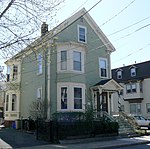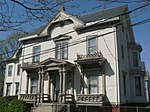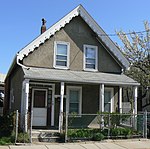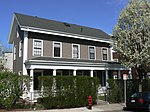Ursuline Convent riots
1834 in Massachusetts1834 in the United States1834 riotsAnti-Catholic riots in the United StatesAugust 1834 events ... and 7 more
Charlestown, BostonHistory of Catholicism in the United StatesHistory of Middlesex County, MassachusettsReligious buildings and structures in the United States destroyed by arsonReligious riotsRiots and civil disorder in MassachusettsSomerville, Massachusetts

The Ursuline Convent riots occurred August 11 and 12, 1834, in Charlestown, Massachusetts, near Boston, in what is now Somerville, Massachusetts. During the riot, a convent of Roman Catholic Ursuline nuns was burned down by a Protestant mob. The event was triggered by reported abuse of a member of the order, and was fueled by the rebirth of extreme anti-Catholic sentiment in antebellum New England.
Excerpt from the Wikipedia article Ursuline Convent riots (License: CC BY-SA 3.0, Authors, Images).Ursuline Convent riots
Wisconsin Avenue, Somerville
Geographical coordinates (GPS) Address Nearby Places Show on map
Geographical coordinates (GPS)
| Latitude | Longitude |
|---|---|
| N 42.389 ° | E -71.084 ° |
Address
Wisconsin Avenue 28;30
02145 Somerville
Massachusetts, United States
Open on Google Maps







